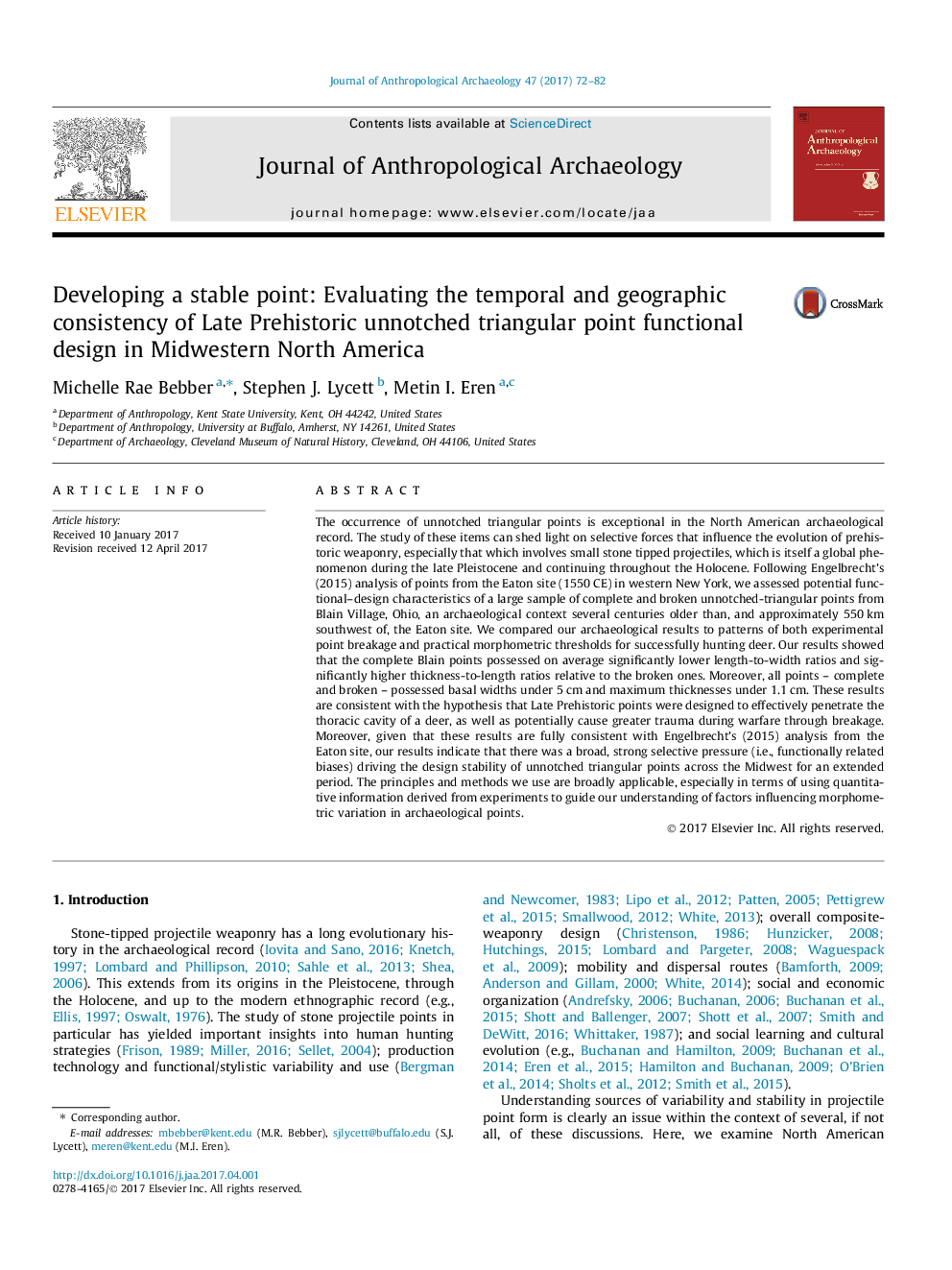| کد مقاله | کد نشریه | سال انتشار | مقاله انگلیسی | نسخه تمام متن |
|---|---|---|---|---|
| 5111959 | 1483844 | 2017 | 11 صفحه PDF | دانلود رایگان |
عنوان انگلیسی مقاله ISI
Developing a stable point: Evaluating the temporal and geographic consistency of Late Prehistoric unnotched triangular point functional design in Midwestern North America
ترجمه فارسی عنوان
توسعه یک نقطه پایدار: ارزیابی هماهنگی زمانی و جغرافیایی طراحی تاکتیکی ناخوشایند تاقدی پیشین در شمال غرب آمریکای شمالی
دانلود مقاله + سفارش ترجمه
دانلود مقاله ISI انگلیسی
رایگان برای ایرانیان
موضوعات مرتبط
علوم انسانی و اجتماعی
علوم انسانی و هنر
تاریخ
چکیده انگلیسی
The occurrence of unnotched triangular points is exceptional in the North American archaeological record. The study of these items can shed light on selective forces that influence the evolution of prehistoric weaponry, especially that which involves small stone tipped projectiles, which is itself a global phenomenon during the late Pleistocene and continuing throughout the Holocene. Following Engelbrecht's (2015) analysis of points from the Eaton site (1550 CE) in western New York, we assessed potential functional-design characteristics of a large sample of complete and broken unnotched-triangular points from Blain Village, Ohio, an archaeological context several centuries older than, and approximately 550Â km southwest of, the Eaton site. We compared our archaeological results to patterns of both experimental point breakage and practical morphometric thresholds for successfully hunting deer. Our results showed that the complete Blain points possessed on average significantly lower length-to-width ratios and significantly higher thickness-to-length ratios relative to the broken ones. Moreover, all points - complete and broken - possessed basal widths under 5Â cm and maximum thicknesses under 1.1Â cm. These results are consistent with the hypothesis that Late Prehistoric points were designed to effectively penetrate the thoracic cavity of a deer, as well as potentially cause greater trauma during warfare through breakage. Moreover, given that these results are fully consistent with Engelbrecht's (2015) analysis from the Eaton site, our results indicate that there was a broad, strong selective pressure (i.e., functionally related biases) driving the design stability of unnotched triangular points across the Midwest for an extended period. The principles and methods we use are broadly applicable, especially in terms of using quantitative information derived from experiments to guide our understanding of factors influencing morphometric variation in archaeological points.
ناشر
Database: Elsevier - ScienceDirect (ساینس دایرکت)
Journal: Journal of Anthropological Archaeology - Volume 47, September 2017, Pages 72-82
Journal: Journal of Anthropological Archaeology - Volume 47, September 2017, Pages 72-82
نویسندگان
Michelle Rae Bebber, Stephen J. Lycett, Metin I. Eren,
